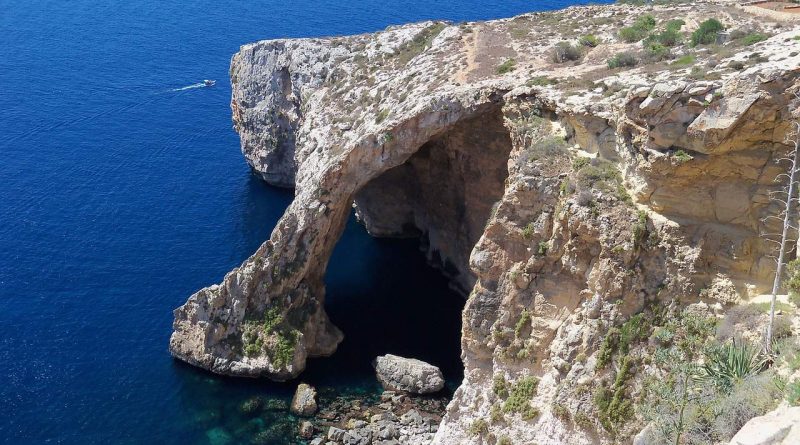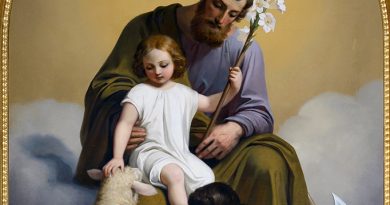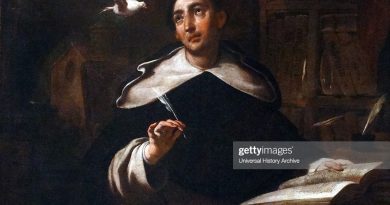What a beauty! But what is beauty?
On Tuesday 2, 2021, Feast of the Presentation of Our Lord in the Temple, I had the joy of starting a new course online, organized by the Pastoral Formation Institute of the Archdiocese of Malta, called The Way of Beauty: Discovering Faith through Art. As one can fathom, this course helps one delve into an art work and let that painting attract him and her to Christ.
When we see something or someone beautiful we exclaim with joy: What a beauty! But what is beauty? Can beauty be defined? In his message to the Communion and Liberation Meeting at Rimini, from 24 till 30 August 2002, the then-Cardinal Joseph Ratzinger offers us this beautiful reflection on beauty:
To admire the icons and the great masterpieces of Christian art in general, leads us on an inner way, a way of overcoming ourselves; thus in this purification of vision that is a purification of the heart, it reveals the beautiful to us, or at least a ray of it. In this way we are brought into contact with the power of the truth. I have often affirmed my conviction that the true apology of Christian faith, the most convincing demonstration of its truth against every denial, are the saints, and the beauty that the faith has generated. Today, for faith to grow, we must lead ourselves and the persons we meet to encounter the saints and to enter into contact with the Beautiful.
Overcoming ourselves, purification of the vision which is purification of the heart is not what we are for when we open our hearts, thanks to God’s sustaining grace, through Christ Jesus? In actual fact, we cannot define beauty since the latter is so dynamic that no one ever dares pretending to contain it. However, as the now Pope Emeritus Benedict XVI is rightly saying, the beautiful is revealed to us through its true rays, who are the saints. They are living icons of the myriads of rays the Beautiful contains in Himself. Thus, if we cannot define precisely what is beauty let us enjoy its different aspects by letting us the saints presenting to us that beauty which leads us to the Beautiful One.
Beauty is loving not judging others. St Teresa of Calcutta says: If you judge people, you have no time to love them. Beauty is being successful. Mother Teresa says again: God has called us not to be successful, but to be faithful. Beauty is forgiveness. Saint Pope John Paul II, who had a first-hand experience of what forgiveness is all about, says: Forgiveness is above all a personal choice, a decision of the heart to go against the natural instinct to pay back evil with evil. Beauty is communicating Truth, Goodness and Beauty in the human person. Pope Francis’ comment to the members of the press requires this responsibility in all of us to carry out with one another when he said: You’ve been busy [these past few days]. Your profession requires study, sensitivity and experience, he said, adding, [the journalistic profession] requires particular attention to truth, goodness and beauty – and this brings us particularly close together, because the Church exists in order to communicate precisely this: Truth, Goodness and Beauty in person.
Beauty is when we are cared for. St Teresa of Calcutta help us hammer in this point when she talks about the great pain of not being wanted, loved and cared for. She says: The poverty of being unwanted, unloved and uncared for is the greatest poverty. We must start in our own homes to remedy this kind of poverty. Beauty is passionate love for Our Lord in the Blessed Sacrament. St Peter Julian Eymard says: Love cannot triumph unless it becomes the one passion of our life. Without such passion we may produce isolated acts of love; but our life is not really won over or consecrated to an ideal. Until we have a passionate love for our Lord in the Most Blessed Sacrament we shall accomplish nothing. Beauty is letting Jesus be the source of our life. St Faustina Kowalska tells us: Jesus, source of my life, sanctify me. O my strength, fortify me. My commander, fight for me.
Beauty is service which comes from a self-emptying heart. St Teresa of Calcutta: A sacrifice to be real must cost, must hurt, must empty ourselves. The fruit of silence is prayer, the fruit of prayer is faith, the fruit of faith is love, the fruit of love is service, the fruit of service is peace. Beauty is that you, with your own individuality, and whatever makes you the way you are, matter to God. St Pope John Paul II says: You are a thought of God, you are a heart-beat of God. To say this is like saying that you have a value which in a sense is infinite, that you matter to God in your completely unique individuality. Beauty is doing good for the love of Jesus. St Alphonsa says: Whatever you do, do it for the love of Jesus. Don’t only work to please your superiors. And the list goes on and on …
The essence of this beauty which we are talking about is none other than Jesus himself and whom the saints lived till their last drop on earth. That is why in that famous speech Pope Emeritus Benedict XVI ended with the following words:
Is there anyone who does not know Dostoyevsky’s often quoted sentence: “The Beautiful will save us”? However, people usually forget that Dostoyevsky is referring here to the redeeming Beauty of Christ. We must learn to see Him. If we know Him, not only in words, but if we are struck by the arrow of his paradoxical beauty, then we will truly know him, and know him not only because we have heard others speak about him. Then we will have found the beauty of Truth, of the Truth that redeems. Nothing can bring us into close contact with the beauty of Christ himself other than the world of beauty created by faith and light that shines out from the faces of the saints, through whom his own light becomes visible.
Such a beauty is awesome because it stands strong to the test of time since it leads to eternal life. Moreover it is this kind of beauty that touches the heart and gently invites it to open its doors to behold the saving rays of the Beautiful One, God.
Fr Mario Attard OFM Cap





